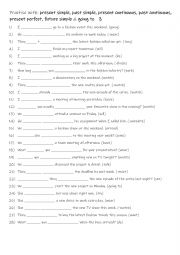
|
A2-B1 Practise with present simple, past simple, present continuous, past continuous, present perfect, future simple & going to 3
Practising these tenses allows students to speak confidently about everyday situations, past events, future plans, and hypothetical scenarios. It improves their ability to communicate with precision, enhances fluency, and prepares them for more advanced grammar. Mastery of these structures supports clearer expression of ideas and better understandi...
Level: elementary
Age: 8-100
Type: worksheet
Downloads: 152
|
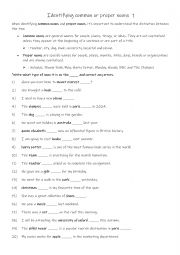
|
Identifying common or proper nouns 1
First, students need to familiarise themselves with the 2 types of nouns. Then they read the sentences to identify and use the correct punctuation for all of the sentences. Answers on page 2
Level: elementary
Age: 9-100
Type:
Downloads: 111
|
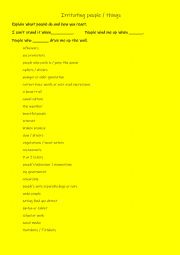
|
26 Irritating people or things B1-C1
Students explain what they do / how they react in certain situations. There are 3 phrases which need to be pre-taught to help students use the target language correctly.
Level: intermediate
Age: 13-100
Type:
Downloads: 132
|
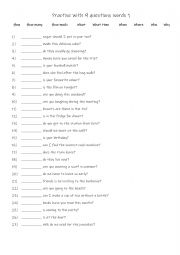
|
Practise with 9 questions words 1
Students familiarise themselves with the 9 question words and their use. Then they read the questions to see which question word is required to complete the questions. Answers on page 2.
Level: elementary
Age: 7-100
Type:
Downloads: 103
|
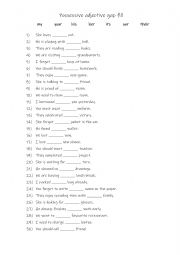
|
Possessive adjective gap fill practise
Students read the sentences and identify the subject to see which possessive adjective is required to complete each sentence. Suitable for A1-A2 level students.Answers on page 2
Level: elementary
Age: 9-100
Type:
Downloads: 101
|
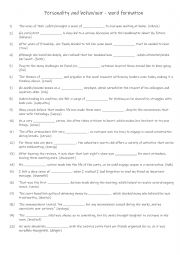
|
B1 Personality and behaviour - word formation
Understanding word formation allows students to expand their vocabulary, enabling them to express themselves more precisely and creatively. Knowing how to manipulate words helps them create varied sentence structures, making their writing more engaging and dynamic. Mastering word formation is key to achieving higher levels of language proficiency, ...
Level: intermediate
Age: 8-100
Type:
Downloads: 108
|
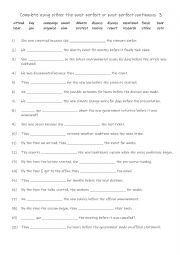
|
A2-B1 Complete using either the past perfect or past perfect continuous 3
First, students need to familiarise themselves with the 2 tenses and their use. Then they read the sentences to see which tense is needed to complete the sentence. Each tense is used 10 times! Answers on page 2.
Level: elementary
Age: 10-100
Type:
Downloads: 118
|
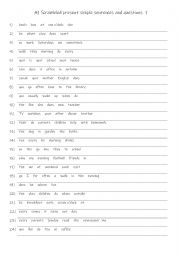
|
A1 Scrambled present simple sentences and questions 1
Practising scrambled present simple sentences and questions helps students understand correct word order, including subject-verb agreement and the use of auxiliaries in negatives and questions. It enhances their grammatical accuracy, boosts critical thinking as they rearrange words meaningfully, and improves their ability to form sentences quickly ...
Level: elementary
Age: 8-100
Type:
Downloads: 108
|
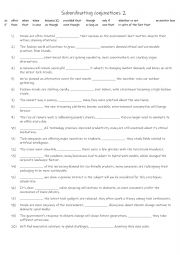
|
B1-C1 20 subordinating conjunctions 2
First, students need to familiarise themselves with the 20 subordinating conjunctions and their meanings. Then they read the sentences to see which one is needed to complete the sentence. Answers on page 2
Level: intermediate
Age: 10-100
Type:
Downloads: 124
|
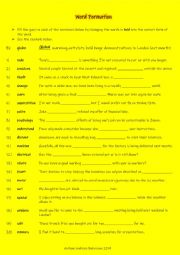
|
Word Formation Activity (1) for students studying IELTS Band 4.5 - 5 or FCE
I designed this worksheet for lower level IELTS and FCE students as a way to practise and to improve their written work by using the correct form of the word. Students need to transform the words in bold at the start of each sentence into either a Noun, Verb, Adjective,Adverb or Prefix to complete the sentences. An answer key is included.
Level: intermediate
Age: 14-100
Type: worksheet
Downloads: 337
|












